Journalist Jeffrey Goldberg has revealed leaked U.S. war plans he received after being accidentally added to a Trump administration group chat.
A journalist was mistakenly added to a highly confidential chat involving U.S. military operations.
The messages he received have now been exposed.

Jeffrey Goldberg’s unexpected addition to a classified chat
Jeffrey Goldberg, editor of The Atlantic, was mistakenly added to a secret Signal chat. The chat involved high-ranking officials discussing U.S. airstrikes in Yemen.
National security adviser Mike Waltz, or someone from his team, added Goldberg to the chat on March 13. This was just two days before the attacks took place.
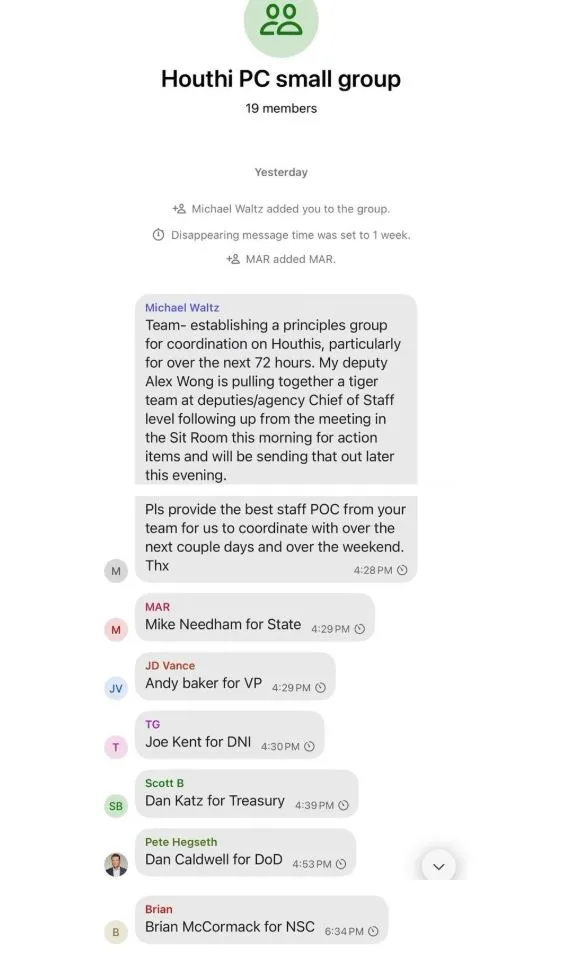
Previously, Brian Krassenstein shared the full chat log on X. The messages revealed details of planned airstrikes.
Defense Secretary Hegseth outlined specific attack orders. His message began with confirmation from U.S. Central Command (CENTCOM):
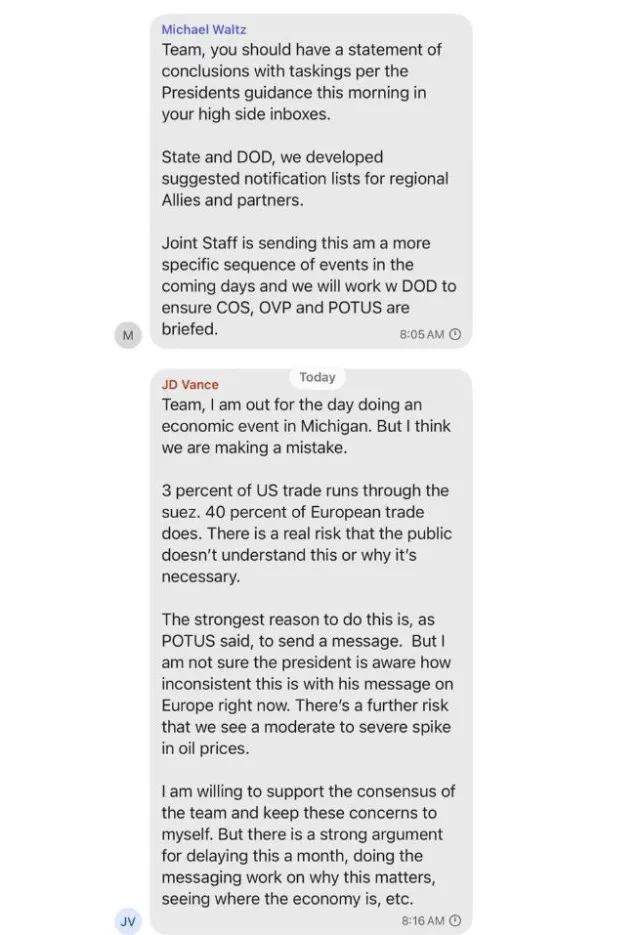
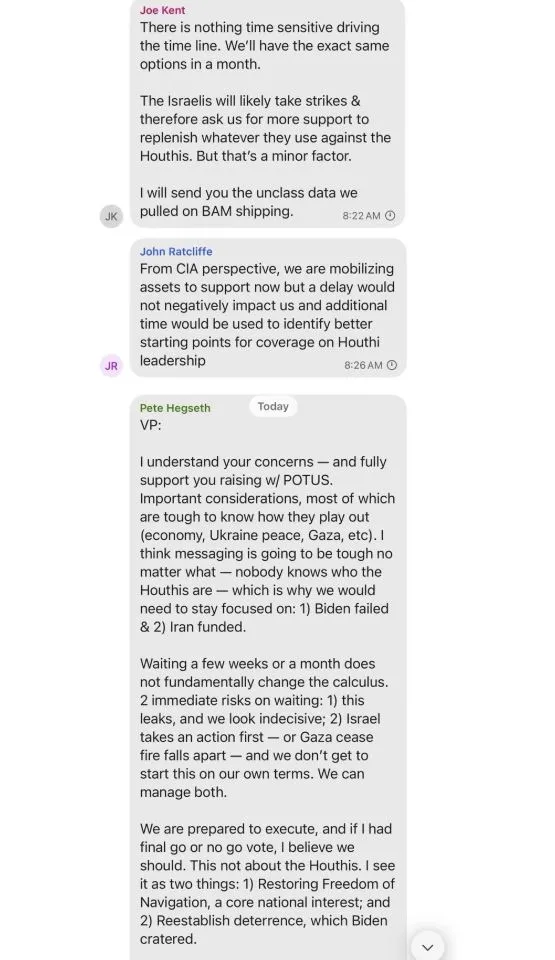
“We are GO for mission launch.” He wrote.
Additionally, he also listed five separate strikes between 12:15 p.m. and 3:36 p.m. The message included details on aircraft used, primarily F-18.
Hegseth ended his message with:”Godspeed to our Warriors,” was how Hesgeth ended his detailed plan, and JD Vance followed this up with “I will say a prayer for victory.”
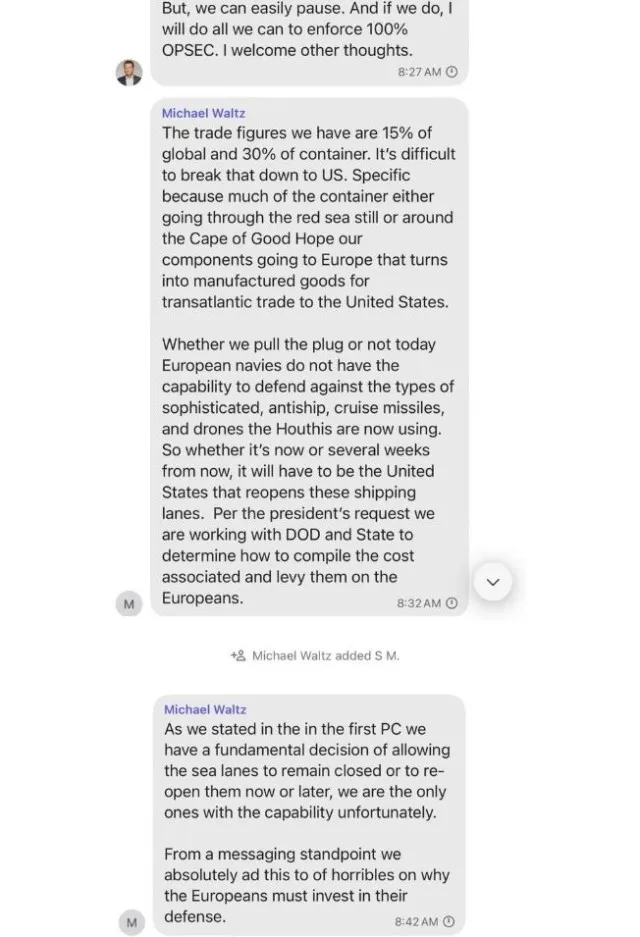
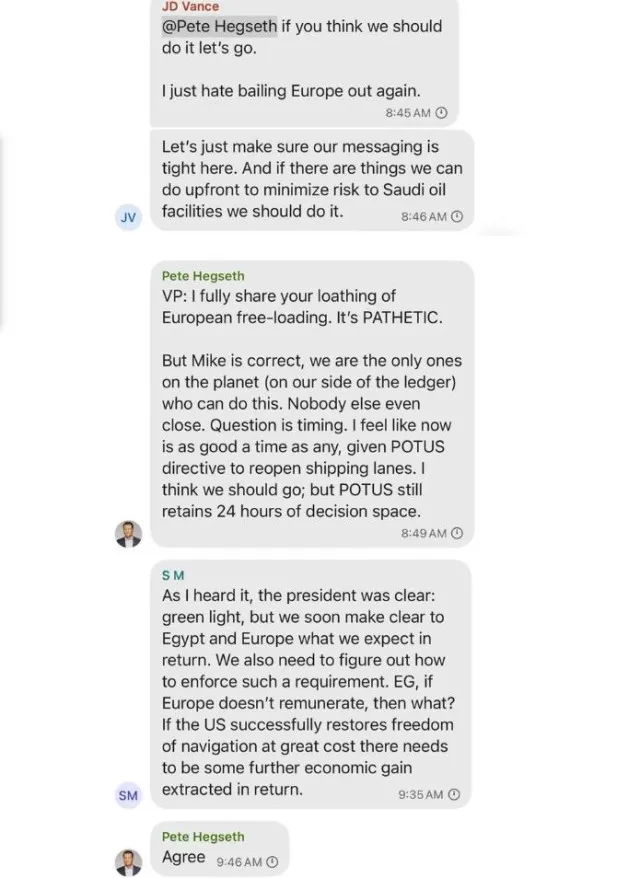
Whle, officials celebrate a targeted killing. National Security Advisor Mike Waltz reported a successful strike on a key target. He described it in detail:
He wroete: “We had positive ID of [the target] walking into his girlfriend’s building and it’s now collapsed.”
Vance replied: “Excellent.”
Goldberg explains why the messages should be made public
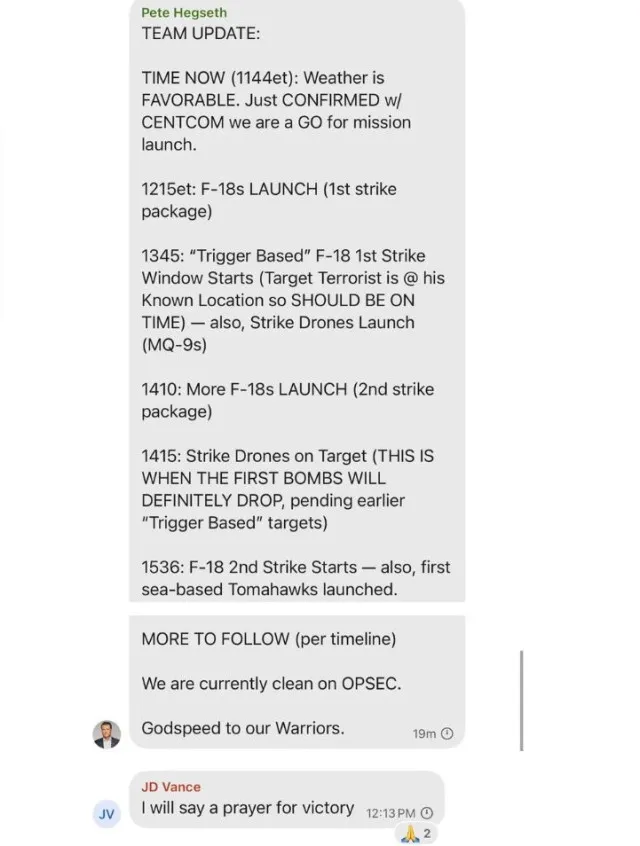
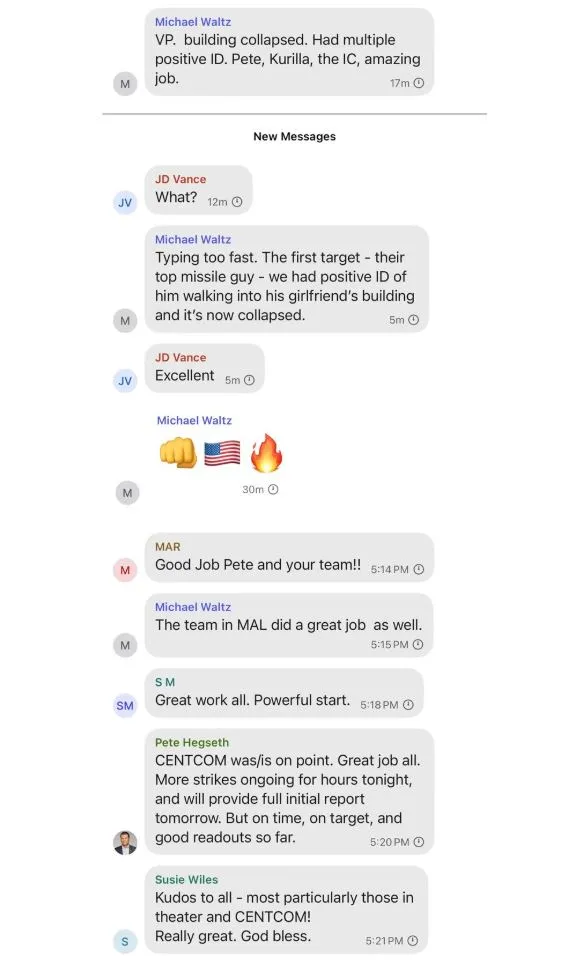
In a statement, Goldberg defended his decision to reveal the messages. He argued that the public should see what Trump’s advisers discussed on unsecured channels.
“There is a clear public interest in disclosing this information,” Goldberg stated. He emphasized that officials were downplaying the significance of the leaked messages.
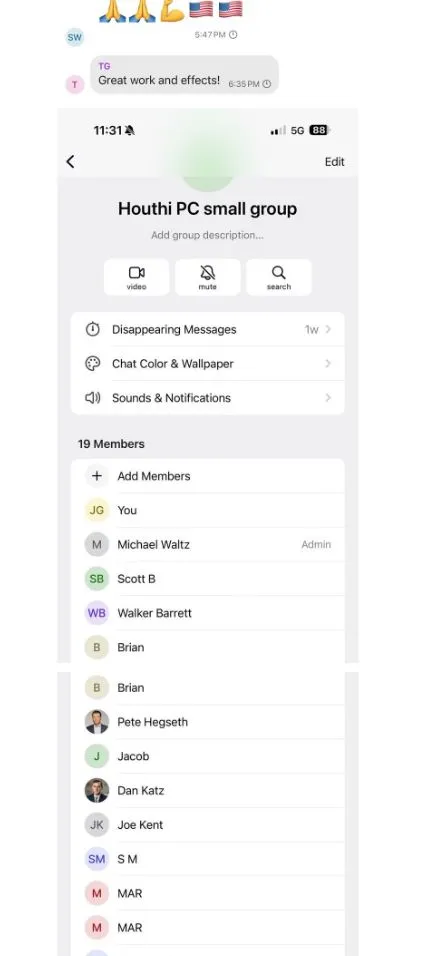
The texts that revealed the us military strike timeline
Goldberg had access to classified military plans two hours before the airstrikes. The messages contained precise details about the timing of the attacks.
One text from Secretary of Defense Pete Hegseth read:
“TIME NOW (1144 ET): Weather is FAVORABLE. Just CONFIRMED w/CENTCOM we are a GO for mission launch.”
Another message followed:
“1215 ET: F-18s LAUNCH (1st strike package).”
A later text detailed:
“1345: ‘Trigger Based’ F-18 1st Strike Window Starts (Target Terrorist is @ his Known Location so SHOULD BE ON TIME – also, Strike Drones Launch (MQ-9s).”
The second strike was scheduled for 15:36, according to Hegseth’s message.
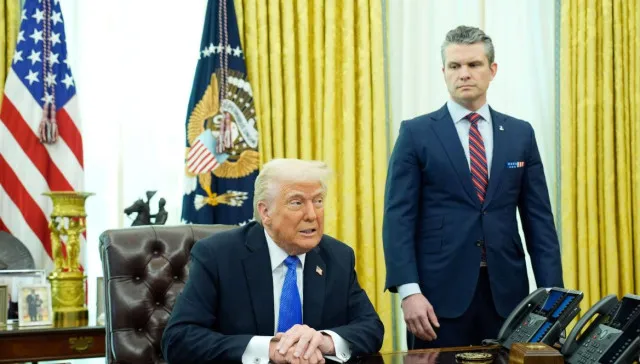
Vice president and officials react to the operation
After seeing the plan, Vice President JD Vance responded, “I will say a prayer for victory.”
Later, Waltz confirmed that the strike had collapsed a building that was believed to have housed the Houthis’ top missile expert.
“Excellent,” Vance replied. Others in the chat applauded the success of the operation.
The Trump administration’s mistake in adding Goldberg to the chat raised concerns. However, Trump remained unfazed.
Speaking to NBC News, he defended Waltz, stating, “Michael Waltz has learned a lesson, and he’s a good man.”

Trump insisted that Goldberg’s presence in the chat had “no impact at all” on the mission.
“It was the only glitch in two months, and it turned out not to be a serious one,” he added.
Additionlly, Goldberg acknowledged that the situation could have been much worse.
“At least it wasn’t somebody who supported the Houthis,” he told PBS.
He stressed that the leaked messages contained information that could have put American service members at risk.
The incident raises serious concerns about the security of government communications.
Despite Trump’s dismissal, the leak highlights vulnerabilities in handling sensitive military information.